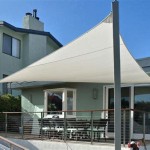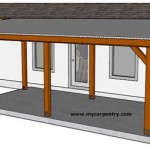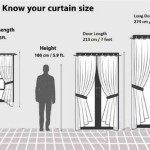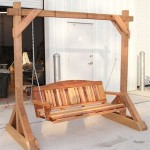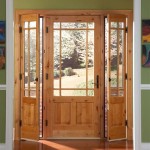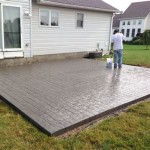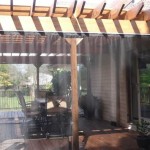Creating The Perfect Patio Bistro Setup
A patio bistro setup offers an intimate and inviting outdoor space, ideal for enjoying morning coffee, sharing a meal, or simply relaxing. Achieving the perfect bistro atmosphere requires careful consideration of several factors, from selecting the right furniture to incorporating appropriate lighting and ambiance elements. This article will guide the construction of an optimal patio bistro setup, focusing on key aspects that contribute to a comfortable and aesthetically pleasing environment.
Selecting the Right Furniture
The cornerstone of any patio bistro setup is the furniture. The selection of furniture should align with available space, intended usage, and overall design aesthetic. Common bistro furniture includes a small table and two chairs, but variations can be incorporated depending on the space and preferences. Durability, material, and style are crucial considerations when choosing furniture for outdoor use.
Size and Shape: The size of the patio will dictate the appropriate dimensions of the bistro table and chairs. A small, round table is often a space-efficient choice for limited areas, while a square or rectangular table may be suitable for larger patios. It is imperative to measure the available space before making any purchases, ensuring that the furniture fits comfortably without overcrowding the area. The table should allow enough room for two people to sit comfortably with ample space for plates, drinks, and any desired centerpiece.
Material and Durability: Outdoor furniture is exposed to the elements, necessitating the selection of durable and weather-resistant materials. Common materials include wrought iron, aluminum, teak, and resin wicker. Wrought iron offers robustness and a classic aesthetic but can be heavy and require maintenance to prevent rust. Aluminum is lightweight, rust-resistant, and requires minimal upkeep. Teak is a durable hardwood naturally resistant to moisture and decay, offering a warm and elegant appearance. Resin wicker is a synthetic material designed to mimic the look of natural wicker while being more durable and weather-resistant.
Style and Comfort: The style of the furniture should complement the overall design of the patio and surrounding landscape. Consider the architectural style of the house and the existing outdoor décor. Choose chairs that are comfortable for extended periods. Options include chairs with cushions, ergonomic designs, or those made from breathable materials. Comfort can be further enhanced by adding outdoor cushions and pillows that coordinate with the color scheme and add a layer of softness.
Storage Considerations: If storage space is limited, consider foldable or stackable bistro sets. These options allow for easy storage during inclement weather or when the patio is not in use. This extends the life of the furniture and prevents unnecessary wear and tear. Additionally, furniture covers can protect the bistro set from sun, rain, and debris, further prolonging its lifespan.
Optimizing Lighting and Ambiance
Lighting and ambiance are critical for transforming a patio into an inviting and relaxing bistro space. The right lighting can enhance the visual appeal of the space while also providing functionality for evening use. Incorporating elements like plants, textiles, and decorative accessories can further enhance the ambiance and create a more personalized and welcoming atmosphere.
Lighting Options: A layered lighting approach is often the most effective for creating a bistro atmosphere. This involves combining different types of lighting to achieve both general illumination and accent lighting. String lights are a popular choice for adding a festive and whimsical touch. They can be strung across the patio or wrapped around trees or railings. Lanterns, either freestanding or hanging, provide a soft and warm glow. Consider using LED candles or solar-powered lanterns for an energy-efficient and safe alternative to traditional candles. Table lamps, specifically designed for outdoor use, can provide focused lighting for reading or dining. Path lighting can be used to illuminate walkways and create a more defined space.
Ambiance Elements: Incorporating natural elements, such as plants and flowers, can significantly enhance the ambiance of the patio. Potted plants can add color and texture, while also providing a sense of privacy and seclusion. Choose plants that are appropriate for the local climate and that complement the overall design aesthetic. Consider using fragrant plants, such as lavender or jasmine, to add a sensory element to the space. Textiles, such as outdoor rugs, cushions, and throws, can add warmth and comfort. Choose fabrics that are durable, weather-resistant, and easy to clean. Rugs can define the space and add a pop of color, while cushions and throws can make the seating more comfortable.
Sound and Privacy: Sound and privacy are important considerations for creating a relaxing bistro environment. If the patio is located near a busy street or noisy neighbors, consider adding a water feature, such as a fountain, to mask unwanted noise. The sound of running water can be calming and relaxing. Privacy screens or hedges can be used to create a sense of seclusion and block unwanted views. These can be made from a variety of materials, such as wood, metal, or bamboo. Alternatively, consider using climbing plants to create a living privacy screen.
Decorative Accessories: Small decorative accessories can add personality and charm to the patio bistro setup. Consider adding items such as wind chimes, sculptures, or decorative planters. Choose items that reflect personal style and that complement the overall design aesthetic. A small outdoor bar cart can be a convenient addition for serving drinks and snacks. Add a small bookcase or shelf to house outdoor books or magazines. These small touches can make the patio feel more inviting and personalized.
Ensuring Comfort and Functionality
Beyond aesthetics, a successful patio bistro setup must prioritize comfort and functionality. This involves considerations such as shade, protection from insects, and ease of maintenance. Addressing these aspects ensures that the bistro space is enjoyable and usable throughout the year.
Shade Solutions: Providing shade is crucial for making the patio comfortable during hot weather. Options include umbrellas, pergolas, and awnings. A large patio umbrella provides portable and adjustable shade. Choose an umbrella with a sturdy base and a fabric that is resistant to fading and mildew. A pergola is a more permanent structure that provides partial shade and can be covered with climbing plants for added visual appeal. An awning is a retractable shade that can be extended or retracted as needed. Choose an awning that is durable and weather-resistant.
Insect Control: Insects can be a nuisance on a patio, especially during the evening hours. There are several methods for controlling insects, including citronella candles, mosquito repellent devices, and insect screens. Citronella candles release a fragrance that repels mosquitoes. Mosquito repellent devices, such as electric bug zappers, can effectively control flying insects. Insect screens can be installed around the patio to create a barrier against insects. Ensure that the screens are properly fitted and maintained to prevent insects from entering the space.
Maintenance and Cleaning: Regular maintenance and cleaning are essential for keeping the patio bistro setup looking its best. Sweep the patio regularly to remove dirt and debris. Clean the furniture with soap and water as needed. Protect the furniture from the elements by covering it or storing it indoors during inclement weather. Inspect the patio regularly for signs of damage or wear and tear and make repairs as needed. Pressure washing the patio can remove stubborn stains and dirt. This will require proper use and consideration depending on the surface material.
Seasonal Adjustments: Adapt the patio bistro setup to reflect the changing seasons. During the summer, focus on providing shade and ventilation. During the fall, add warm textiles and lighting. In the winter, remove or cover the furniture to protect it from the elements. Be prepared to adjust the layout, decor, and lighting to suit the climate and seasonal environment. This will allow the patio to be used year round.

14 Restaurant Patio Ideas For Design Inspiration

14 Restaurant Patio Ideas For Design Inspiration

14 Restaurant Patio Ideas For Design Inspiration

How To Set Up The Perfect Outdoor Seating Area For Your Restaurant Cibowares

36 Ideas For Building The Ultimate Outdoor Kitchen Extra Space Storage

Creating The Perfect Outdoor Dinner Party Set Up Tips

How To Properly Set Up Your Restaurant Patio For Summer

36 Ideas For Building The Ultimate Outdoor Kitchen Extra Space Storage

6 Tips For The Perfect Restaurant Patio Displays2go

36 Ideas For Building The Ultimate Outdoor Kitchen Extra Space Storage
Related Posts

